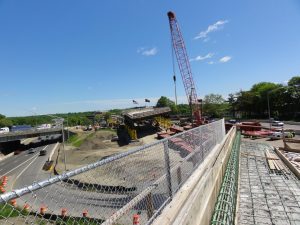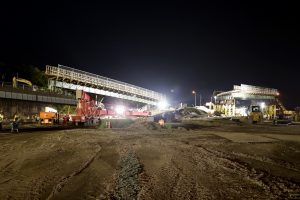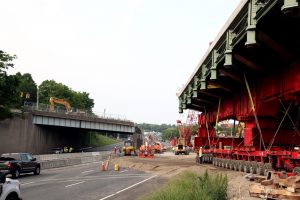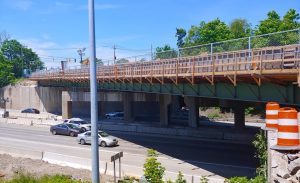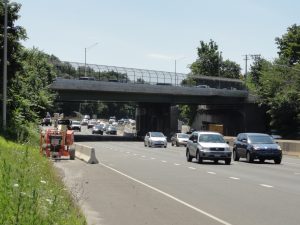December 17, 2020 1:00 pm
Rabih Barakat, P.E., Principal Engineer, Connecticut Department of Transportation; Thomas Laliberte, P.E., Assistant Vice President/Connecticut Structures Lead, WSP USA; George Gerard, P.E., Senior Structural Engineer, WSP USA; and Q&A panel members Tim Fields, P.E., State Bridge Engineer and Transportation Principal Engineer, Bridge Consultant Design, Connecticut DOT; and Louis Bacho, P.E., Project Manager, Connecticut DOT
Winner of Best ABC Project Award in the Self-Propelled Modular Transporters Category (Highway Bridge) at the 2019 International ABC Conference!
Webinar Documents:
Connecticut’s Rapid Rehabilitation of US Route 1 Bridge over I-95 - pdf of presentation
Link to CTDOT's ABC Decision Matrix
Construction Video (courtesy Connecticut Department of Transportation)
Q&A Session - pdf
News - December 17, 2020 - pdf of presentation
Description: The 2019 superstructure replacement of the US Route 1 Bridge over I-95 in Stamford, Connecticut utilized self-propelled modular transporters (SPMTs) to replace the two-span, simply supported, heavily skewed (>54 degrees) superstructure during two 56-hour weekend closures of I-95. The bridge is located within a heavily congested interchange of I-95, where conventional staging for the superstructure replacement was not a viable option. The project replaced two superstructures, increased minimum vertical clearance, installed approach slabs, and rehabilitated the existing substructure. Bridge 00037 is one of the first projects in Connecticut to utilize SPMTs to perform a superstructure replacement. There were unique design considerations relative to existing site topography, superstructure geometry, deck tension, temporary supports, laydown areas, SPMT pick points relative to erection supports, and travel paths. This presentation will discuss the project history which resulted in the use of SPMTs, construction summary, and the unique design considerations associated with the utilization of SPMTs.
Presentation Photos/Graphics:


